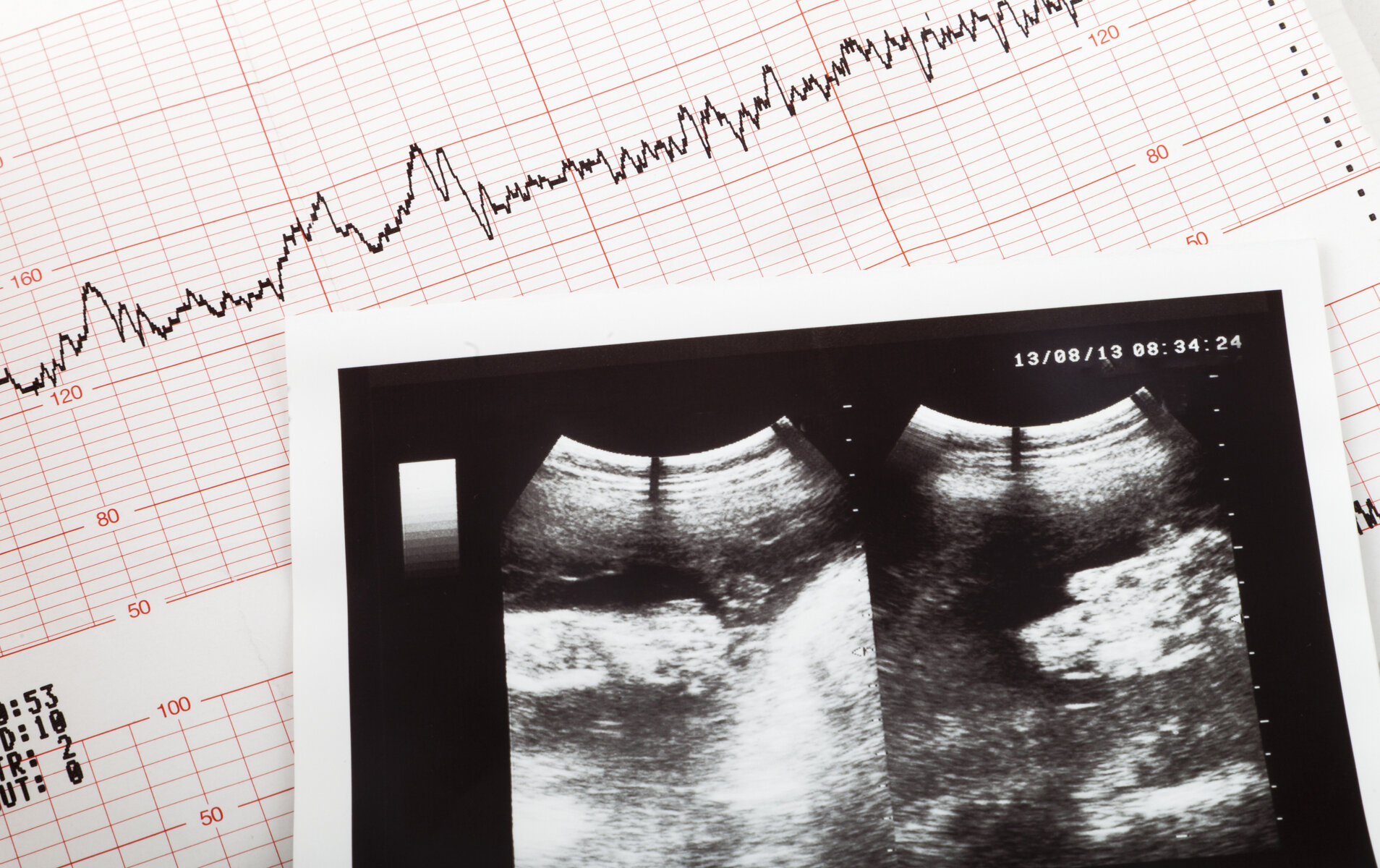As a newly expectant mother, you’re probably excited to have your baby’s first ultrasound. This is the first time you’ll be able to see your baby and possibly hear the heartbeat. But you may also be wondering what to expect at the first trimester ultrasound. Below, we’ve broken down what an ultrasound is and what your doctor will be looking for throughout the pregnancy.
What is an Ultrasound?
An ultrasound, also known as sonography, uses high-frequency sound waves to capture live images in the body. Sound waves go through your uterus, then bounce off the baby as vibrations. These vibrations change to electrical signals, which then produce a black and white image on the screen. This technology is similar to sonar and radar, and there is no radiation involved. This makes ultrasound highly preferable for pregnancy.
When used for pregnancy, the doctor uses sonography to view your baby’s tissues and organs. But doctors may also use ultrasounds when they need an internal view of your body for other symptoms.
Types of Ultrasounds
You may get your ultrasound at the doctor’s office or a hospital. The two main types of pregnancy ultrasound are transvaginal probes and abdominal ultrasounds. Some offices, including Copperstate OB/Gyn, even offer 3D/4D ultrasounds.
Transvaginal Probe
A transvaginal probe is a transductor placed in the vagina to view your uterus through the cervix. It is a wand-shaped probe, typically covered with a condom and lubricant, then inserted into the vagina. The ultrasound technician will move the device to get the picture they need on the monitor. This type of ultrasound is not considered painful but may be uncomfortable.
The technician may use this method if you need an ultrasound early in the pregnancy, while the fetus is deep within the mother’s pelvis. Sound waves won’t pass through the pelvic bone, so they may need to view the baby through the cervix. The transvaginal probe may also be used later in pregnancy to measure the placenta or length of the cervix.
Abdominal Ultrasound
The abdominal ultrasound is what most people think of when it comes to ultrasounds for babies. The technician applies clear gel to your belly, then moves the transductor along your abdomen. You can expect some gentle pressure. The transductor transmits the sound waves that show pictures of the baby on the screen. The technician can typically perform this ultrasound after the first few weeks of pregnancy.
When Do You Get Your First Ultrasound?
Your baby’s first trimester ultrasound date varies depending on your health. If you have certain medical conditions such as obesity or asthma, your doctor may want to get an ultrasound between 6 to 9 weeks of pregnancy. Most practitioners don’t include this in their standard practice because the baby is still very small, and details are hard to see.
If you’re healthy and do not have a high-risk pregnancy, most doctors will wait until weeks 18-22 of your pregnancy, or the second trimester. From this first ultrasound, your doctor will be able to measure the baby’s size, tell the baby’s sex, verify your baby’s position, estimate amniotic fluid and check all major organs. You can also see your baby’s face, hands and feet, although you may need the sonographer to point them out.
Hearing The Baby’s Heartbeat
With today’s technology, you can listen to your baby’s heartbeat through a fetal doppler. A fetal doppler is a handheld ultrasound device you can use at home or the doctor’s office. It uses the same ultrasound technology to detect the baby’s heartbeat through soundwaves. You can hear your baby’s heartbeat at about 12 weeks using the device.
Since it’s impossible to hear the baby’s heartbeat with human ears, you’ll need to use an ultrasound or fetal doppler to hear it. You may not hear the baby’s heartbeat at the first trimester ultrasound appointment, and that’s okay. It may be because you’re not far enough along in the pregnancy or the baby’s position. Sometimes the baby’s heartbeat can be detected as early as 5 to 6 weeks after conception. You can usually hear the heartbeat better closer to 10 weeks after gestation. The baby’s heartbeat should be about 140-170 beats per minute (bpm) at this point.
Measuring The Baby
Your doctor can check the baby’s size using ultrasound technology. In the first trimester, they can check the crown-to-rump length. This mostly helps them determine how far along the baby is. In the second trimester, you’ll have an “anatomy scan,” which will determine the baby’s sex and by the third trimester, they can estimate the baby’s height and weight. Many mothers are anxious to know how big their baby will be at birth and are reassured knowing their doctor can reasonably estimate the baby’s birth size.
It’s good to have some expectations for your first prenatal ultrasound or first OB/Gyn appointment, but try to maintain an open mind and a flexible attitude. After all, pregnancy can be as unpredictable as it is beautiful, and keeping an open mind will help you to better handle any unexpected surprises in your journey.
Are you looking for an OB/Gyn you can trust? Do you live in the Tucson area? Let us join you on your amazing and unique pregnancy journey. Book an appointment today!
To read more helpful discussions regarding women’s health, pregnancy, and OB/Gyn services, check out our blog!
*This blog post was originally published on May 5, 2021. It was republished with updates on May 13, 2022.*
Sources:
- https://www.webmd.com/baby/guide/pregnancy-tests#1
- https://www.verywellfamily.com/home-pregnancy-tests-906656
- https://www.ajog.org/article/S0002-9378(03)01135-9/fulltext
- https://www.clearblue.com/pregnancy-tests/false-positive-results
- https://www.copperstateobgyn.com/calculating-your-babys-due-date/

